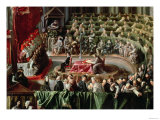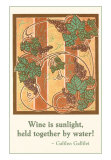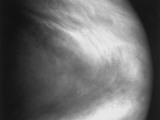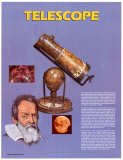Galileo Galilei Posters, Books, Videos, Links for Learning
|
||||||||||||||||||||||||||||||||||||||||||||||||||||||||||||||
|
science > astronomers > GALILEO GALILEI 1 | 2 < notable men < social studies |
||||||||||||||||||||||||||||||||||||||||||||||||||||||||||||||
|
Galileo Galilei, an Italian Renaissance man, was a mathematician, astronomer, astrologer, philosopher, and physicist whose quantitative experiment based work places him at the beginning of the scientific revolution. Galileo is often referred to as “the father” of modern astronomy, modern physics, and science, with his break from Aristotle's abstract approach to phenomenon. Galileo produced the first systematic studies of uniformly accelerated motion, improved the telescope, made astronomical observations, and supported the Copernican idea of heliocentrism (Helios = “Sun” and kentron = “Center”. Galileo was put through considerable trouble for this theory that we know today to be unsupported - the Sun is not the center of the Universe. The Catholic Church supported Ptolemy's geocentric view in which the Earth was the center of the universe and all celestial bodies orbited it. Because Galileo did not obey a papel decree not to “hold or defend” heliocentrism, he was threatened with excommunication and stood trial on suspicion of heresy in 1633. He was required to recant, put under house arrest, and forbidden to publish his ideas. By the mid 1700s the Church had recanted and authorized the publication of Galileo's work. In 1992, Pope John Paul II expressed “regret for how the Galileo affair was handled”. |
||||||||||||||||||||||||||||||||||||||||||||||||||||||||||||||
“You cannot teach a man anything, you can only help him to find it for himself.” Galileo Galilei GALILEO GALILEI BOOKS, VIDEO, AUDIO Dialogue Concerning the Two Chief World Systems by Galileo Galilei - published in Florence in 1632 ... the most proximate cause of his being brought to trial before the Inquisition. Using the dialogue form, a genre common in classical philosophical works, Galileo masterfully demonstrates the truth of the Copernican system over the Ptolemaic one, proving, for the first time, that the earth revolves around the sun. Its influence is incalculable. The Dialogue is not only one of the most important scientific treatises ever written, but a work of supreme clarity and accessibility, remaining as readable now as when it was first published. This edition uses the definitive text established by the University of California Press, in Stillman Drake’s translation, and includes a Foreword by Albert Einstein and a new introduction by J. L. Heilbron. Discoveries and Opinions of Galileo (1610 Letter to the Grand Duchess Christina) - Galileo introduced the world to the two most significant aspects of modern science – its method of inquiry and its criterion of truth – for he was the first major figure to champion the right of the scientist to pursue his research through observation and experiment, uninfluence by such nonscientific considerations as politics and theology. Directing his polemics against the pedantry of his time, Galileo, as his own popularizer, addressed his writings to contemporary laymen. His support of Copernican cosmology against the Church's strong opposition, his development of a telescope and observation of such phenomena as comets and sunspots, his unorthodox opinions as a philosopher of science – these were the central concerns of his career and the subjects of four of his most important writings. Galileo in Rome: The Rise and Fall of a Troublesome Genius Galileo by Bertolt Brecht - Considered by many to be one of Brecht's masterpieces, Galileo, explores the question of a scientist's social and ethical responsibility, as the brilliant Galileo must choose between his life and his life's work when confronted with the demands of the Inquisition. Through the dramatic characterization of the famous physicist, Brecht examines the issues of scientific morality and the difficult relationship beween the intellectual and authority. (back cover). Galileo's Daughter: A Historical memoir of Science, Faith, and Love - Galileo Galilei's telescopes allowed him to discover a new reality in the heavens. But for publicly declaring his astounding argument – that the earth revolves around the sun – he was accused of heresy and put under house arrest by the Holy Office of the Inquisition. Living a far different life, Galileo's daughter Virginia, a cloistered nun, proved to be her father's greatest source of strength through the difficult years of his trial and persecution. Along Came Galileo - insightful and delightful look into the life of a courageous man of faith and science. It was Galileo’s questioning mind and insatiable curiousity which drove him to monumental breakthroughs in astronomy, physics, and mechanics. His many discoveries and inventions challenged and eventually changed ‘the acceptabled way of thinking’ in these fields of thought. Learn all about this remarkable figure in this title packed with many of the author’s original illustrations. Young Adult (Product Description) Galileo: On the Shoulders of Giants (2000) DVD - from The Inventors' Specials, a series that invites youngsters to think about great inventors (including Edison and Einstein), focuses on the man who brought the wonder of science into the Dark Ages. Michael Moriarty gives vigor to his role as the scientist who is forced to take on a young apprentice. First bored with his new surroundings, the youngster develops a keen interest in Galileo's inventions, including his latest, the telescope. The hour-long video, which played on HBO and won two daytime Emmys, doesn't pull any punches by explaining what happened to heretics who, like Galileo, preached the Earth wasn't the center of the universe. Ages 7 and up. (Product Description) Galileo's Battle for the Heavens, NOVA (VHS) 2002 - adapted from “Galileo's Daughter”. LINKS FOR LEARNING : GALILEO GALILEI
|
||||||||||||||||||||||||||||||||||||||||||||||||||||||||||||||
|
previous page | top |
|
|
|
NPW home | Global PathMarker Collection | APWTW Blog | faqs-about | contact | search | privacy |
|
NetPosterWorks.com ©2007-2015 The Creative Process, LLC All Rights Reserved. |
last updated


















